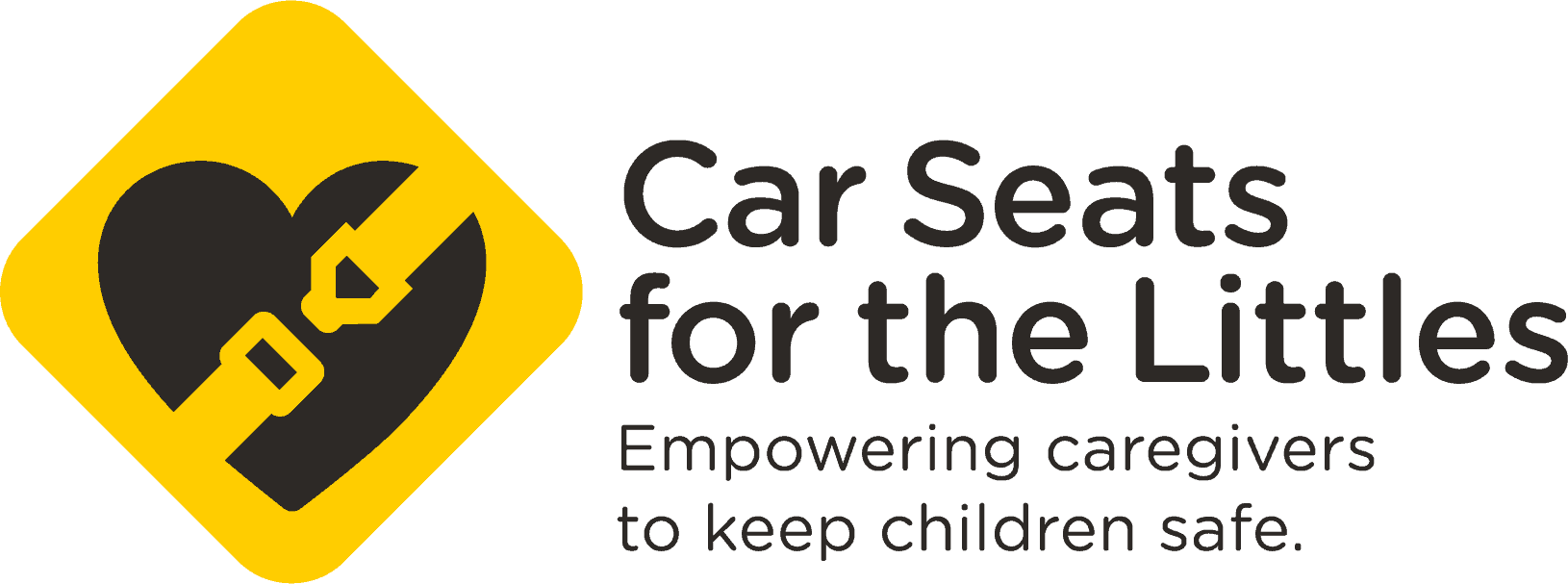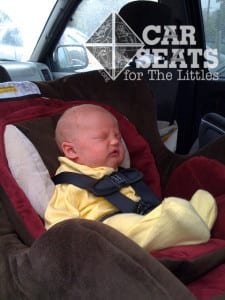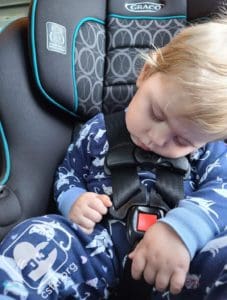Head slump is both the most evil thing people think it is and not at all a big deal. Confused? So are many other caregivers.
When we are handed our mewling bundles for the first time, we are told to support their heads and keep their heads back. They have no head control forward or backward, so support their head. Support their head. Keep their head back, but support their head.
After that is drilled into us, it’s no wonder we have parents buying new car seats or rearranging everything to do away with head slump.
This is both a potentially fatal topic and not a big deal. Let’s break it down between two general age groups. Babies without head control and older babies with head control.
For a baby without head control we need to make sure their airway stays open and their heads stay back. We don’t need to immobilize them; their head can move toward the side. We need to make sure their airways stay open in the car though so they can breathe. Their airways are only the size of a drinking straw, so they require protection for several months. In order to do that, follow your specific car seat’s manual about the proper recline. Every rear facing seat has some way to recline it, and nearly all have an indicator on the seat to show the proper amount (Diono convertibles are the only ones I can think of that do not have a recline indicator).
Recline Angle
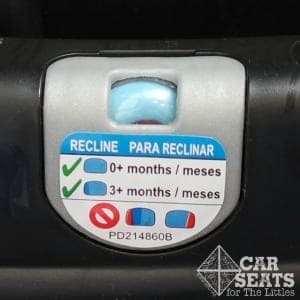
A recline range. Notice the darker blue allowed by this seat for a child who presumably has more head control, but the more reclined is still allowed at that point as well.
If your seat has a range allowed, and you have a newborn, recline the seat as much as that range allows. It’s very possible, after birth, you find that your baby does well sitting more upright. Assume before birth though that your baby will have no head control and err on the side of caution. Better to have the seat more reclined than baby needs than more upright than baby can handle. Readjust after a few weeks if desired. If you find that your baby cannot handle the recline, see if you can recline it more. There may be a little more recline hiding you didn’t realize you could use. If your seat has a bubble or a colored indicator, make sure you are on level ground when you check it. It is gravity operated and will read false when it’s not on level ground.
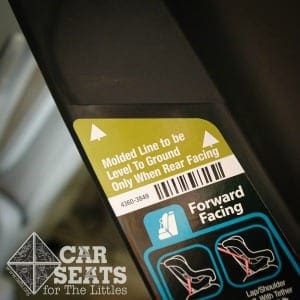
Single recline line
If you have a single line, make sure the line is parallel to the ground. That’s the one and only recline range allowed for that seat regardless of age, height, or weight of the child. This does not need a level roadway or driveway under the the wheels. Even if you and the car are clinging to the side of a cliff, it’s at the correct recline (please don’t take babies without head control up the side of cliffs in cars).

Two recline lines, one for younger babies without as much head control, one for older babies and children.
For two lines, for a newborn or baby without head control, aim for the more reclined line parallel to the ground. Some seats with lines allow for a range between the two lines at any weight, others have weight stipulations for when each line may be used. For a newborn, it’s always the more reclined of the two lines.
For a baby who does have head control (anywhere from about two to six months, it is VERY baby dependent) and is older, head slump isn’t as much of a concern. In fact, it’s not a concern at all for an otherwise healthy infant. Why not? They’ll do what we do. When we watch the passenger in the seat next to us snoring along with their chin to their chest drooling, what do they inevitably do? Snort, chew their teeth a bit, smack their lips, and move their head. That’s the body’s way of saying, “I can’t breathe, silly. Move your head.” Once a baby can move their head in their sleep they can take care of this on their own and you needn’t worry anymore. You can often sit the seat more upright at this point. It can be in the other recline range allowed if there is one (and the weight limit isn’t an issue on your particular seat). This is the time convertibles can become more compact than rear facing only seats, because the baby doesn’t require the recline to keep their airway open.
Comfort
Another concern that most parents have is that their child is uncomfortable with their head dangling. It’s true that some babies are. Some kids are. Most are not. Watch their reactions and don’t project how you would feel if you slept like they were sleeping. Most adults would also not sleep in a bed head down, arms under their bellies, with their bums thrust into the air without any blankets on, but babies tend to love that position. They are more flexible than we are and generally are not concerned by their chins going to their chest once they can pull them up in their sleep. If they are unable to get into a deep sleep, or cry, then you might want to take measures and see what can be done to make them more comfortable. If they are soundly sleeping with their chin practically to their armpits, leave them alone. It looks horrid, but it’s safe and they are comfortable.
Special Considerations
If you have a child with special considerations who does not have head control, even when they’re older, and who may not ever have head control, keep them at the newborn recline. If that will go against the recline instructions of your particular seat (that says to sit a seat more upright after X pounds or Y months), please contact the manufacturer and explain your situation. For some kids this is the level they will simply need. When it’s time to go forward facing, please consult with a Special Needs trained technician to guide you toward a forward facing seat that will not cause help slump for a child who cannot then pull their head back up.
When we think of head slump we think of our own aching necks after sleeping in the car on a road trip. For kids it doesn’t have to be that way, and normally isn’t. For a child with head control, watch them, not their necks, and see how they react. More than likely, they’re just fine. It hurts us to look at them, for sure, but they’re ok with it. Just keep their heads back until they have head control.
Caregivers, Too!
Protecting heads isn’t just for kiddos, it applies to everyone in the vehicle. Make sure that every passenger has a vehicle headrest in the correct position behind their heads — confirm the correct position in your vehicle’s manual. Typically, this position has the headrest behind the middle of the person’s head.
